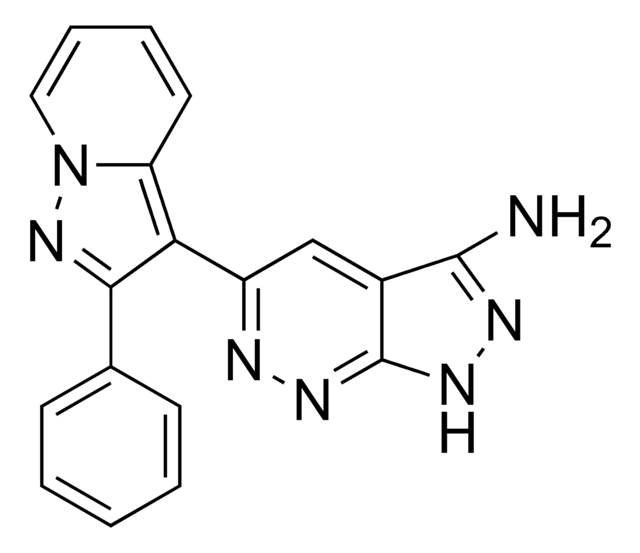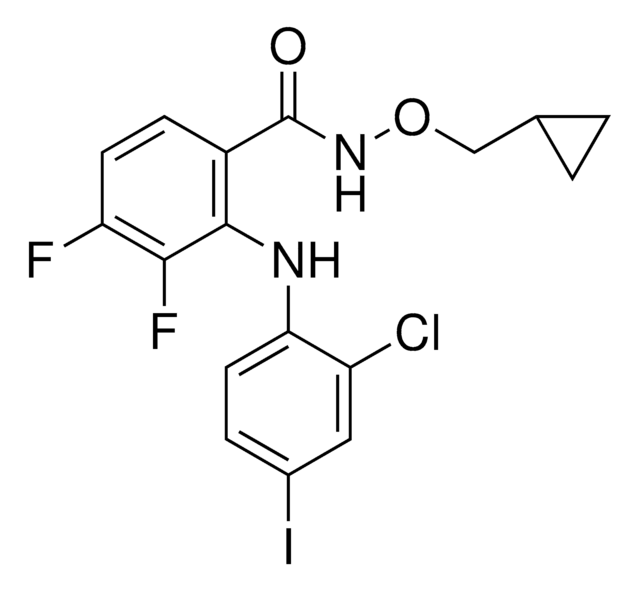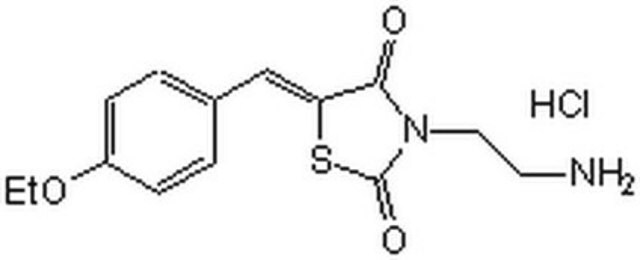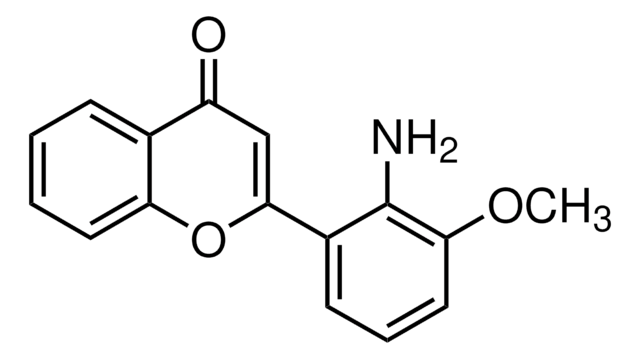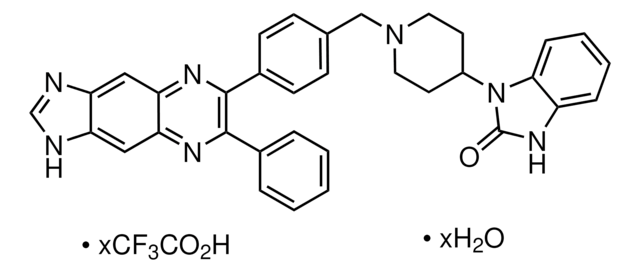A6355
3-(2-Aminoethyl)-5-((4-ethoxyphenyl)methylene)-2,4-thiazolidinedione hydrochloride
powder, ≥98% (HPLC)
Sinônimo(s):
Erk Inhibitor
About This Item
Produtos recomendados
Nível de qualidade
Ensaio
≥98% (HPLC)
Formulário
powder
condição de armazenamento
desiccated
under inert gas
cor
off-white
solubilidade
DMSO: ≥4 mg/mL
temperatura de armazenamento
2-8°C
cadeia de caracteres SMILES
Cl[H].CCOc1ccc(cc1)C=C2SC(=O)N(CCN)C2=O
InChI
1S/C14H16N2O3S.ClH/c1-2-19-11-5-3-10(4-6-11)9-12-13(17)16(8-7-15)14(18)20-12;/h3-6,9H,2,7-8,15H2,1H3;1H/b12-9+;
chave InChI
PQVLWVGMXJPJLG-NBYYMMLRSA-N
Aplicação
Ações bioquímicas/fisiológicas
Características e benefícios
Código de classe de armazenamento
11 - Combustible Solids
Classe de risco de água (WGK)
WGK 3
Ponto de fulgor (°F)
Not applicable
Ponto de fulgor (°C)
Not applicable
Escolha uma das versões mais recentes:
Já possui este produto?
Encontre a documentação dos produtos que você adquiriu recentemente na biblioteca de documentos.
Artigos
The mitogen-activated protein kinase (MAPK) family consists of both stress activated (SAPK) and mitogen-activated (MAPK) protein kinases. They form a network of signal transduction cascades that mediate cellular responses to a diverse range of stimuli, including growth factors, chemical or osmotic stress, irradiation, bacterial infection and proinflammatory cytokines.
Nossa equipe de cientistas tem experiência em todas as áreas de pesquisa, incluindo Life Sciences, ciência de materiais, síntese química, cromatografia, química analítica e muitas outras.
Entre em contato com a assistência técnica